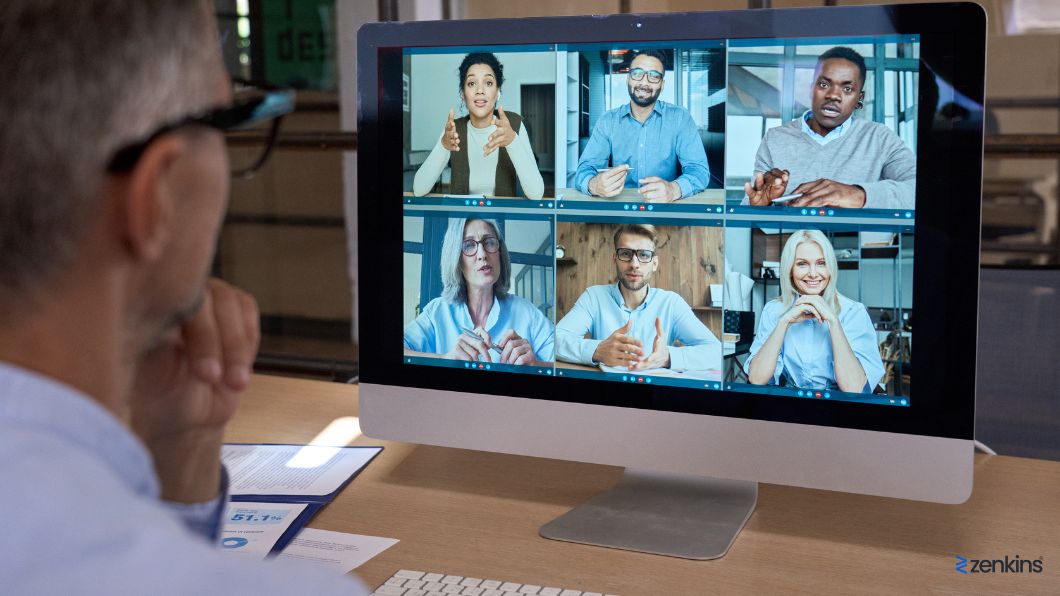How to Manage Your Remote IT Team Effectively
Table of Contents
In today’s digital era, managing a remote IT team has become increasingly common and essential for organizations. With the rise of remote work, it is crucial to understand the unique challenges and strategies involved in effectively managing a distributed IT team. This article aims to provide insights and guidance on how to navigate the nuances of remote IT team management, from establishing clear communication channels to maximizing productivity. By implementing the recommended practices shared in this article, you can ensure your remote IT team operates smoothly, remains productive, and achieves its goals.
Introduction to Remote IT Team Management
Working with a remote IT team can be both a blessing and a challenge. On one hand, you have access to a pool of talented individuals from around the world, and on the other hand, coordinating tasks and ensuring effective communication can be as tricky as finding that one misplaced semicolon in your code. In this article, we will explore how to manage your remote IT team effectively, tackling the challenges head-on while embracing the benefits and advantages that remote work brings.
Understanding the Challenges of Managing Remote IT Teams
Managing a team that is spread across different time zones and cultures can make your head spin faster than a spinning wheel of death on a slow computer. Lack of face-to-face interaction, miscommunication, and difficulty in coordinating tasks are just a few of the challenges that remote IT team managers face. However, with the right strategies and tools, these challenges can be overcome, and your team can be humming along like a well-oiled machine.
The Benefits and Advantages of Remote IT Team Management
Now, let’s focus on the silver lining! Managing a remote IT team offers several benefits that can make your work life a whole lot easier. First off, you have access to a global talent pool, which means you can recruit top-notch professionals from anywhere in the world. Additionally, remote work allows for flexible schedules, increased productivity, and a healthier work-life balance. Plus, who doesn’t love the idea of running a team in your comfy pajamas while sipping coffee from your favorite mug?
Establishing Clear Communication Channels
When it comes to managing a remote IT team, communication is key. Without clear and efficient channels of communication, your team can quickly become as disoriented as a confused user staring at a blue screen of death. To avoid such a horror show, it’s essential to select the right communication tools and platforms that facilitate seamless collaboration across borders and time zones.
Selecting the Right Communication Tools and Platforms
Forget carrier pigeons and smoke signals; we have an abundance of modern communication tools at our disposal. From email to instant messaging, video conferencing to project management software, the options are aplenty. Choose tools that suit the specific needs of your team and promote real-time communication, document sharing, and efficient task management.
Defining Communication Expectations and Guidelines
It’s not enough to just have the right tools; you also need to set clear expectations and guidelines for communication within your team. Establish norms for response times, preferred modes of communication, and availability windows. This will ensure that everyone is on the same page and prevent misunderstandings that can lead to frustration and confusion.
Setting Clear Expectations and Goals
A team without clear expectations and goals is like a server without backup – prone to crashes and chaos. To prevent your remote IT team from spiraling into the digital void, it’s crucial to set clear expectations and goals right from the start.
Defining Roles and Responsibilities
Each team member should have a clear understanding of their roles and responsibilities. This will eliminate any confusion and ensure that everyone knows what is expected of them. It’s like assigning specific superheroes to save the day but without the flashy costumes.
Aligning Individual Goals with Organizational Objectives
To achieve optimal results, individual goals should align with the bigger picture – the organization’s objectives. When team members understand how their work contributes to the overall success of the company, they are more motivated and focused. It’s like giving them a cape and saying, “You are the hero this organization needs!”
Building Trust and Collaboration within the Team
Managing a remote IT team requires a healthy dose of trust and collaboration. Without it, your team might as well be operating in code silos, with each member working independently and none of them knowing what the other is doing.
Encouraging Open and Transparent Communication
Encourage your team members to communicate openly and transparently. It’s important to foster an environment where questions are welcomed, ideas are shared, and feedback is given constructively. This will create a sense of camaraderie and ensure that everyone is on the same page. Plus, who doesn’t love a good GIF battle in the team chat?
Promoting Team-building Activities and Virtual Socialization
Even though your team may be physically distant, that doesn’t mean they can’t form strong connections. Encourage team-building activities and virtual socialization to foster a sense of belonging and camaraderie. From virtual happy hours to online gaming sessions, there are plenty of ways to have fun together, even if you can’t physically be in the same room.
Implementing Effective Project Management Practices
Breaking Down Projects into Manageable Tasks
Managing a remote IT team can be challenging, especially when it comes to keeping track of multiple projects. To ensure effective project management, break down larger tasks into smaller, manageable tasks. This not only helps your team stay organized but also provides a clear roadmap to completion. Plus, let’s be honest, crossing off smaller tasks feels way more satisfying than staring at a never-ending to-do list.
Establishing Milestones and Deadlines
Ah, deadlines. They can either be your best friend or the bane of your existence. But when it comes to managing a remote IT team, setting clear milestones and deadlines is essential. It helps everyone stay on track and ensures that projects are completed in a timely manner. Just remember to be realistic and provide your team with a reasonable timeframe. No one likes feeling like they’re in a race against the clock, except maybe Usain Bolt.
Providing Continuous Support and Feedback
Offering Regular Check-ins and One-on-One Meetings
Working remotely can sometimes feel isolating, which is why offering regular check-ins and one-on-one meetings is crucial. It allows you to touch base with your team, provide guidance, and address any concerns or roadblocks they may be facing. Treat these meetings as an opportunity to connect and build relationships. And if you’re feeling extra adventurous, spice things up with some virtual team-building activities. Trust falls over Zoom can be quite the experience.
Providing Constructive Feedback and Recognition
Feedback is like the salt and pepper of effective management. It adds flavor to your team’s performance and helps them grow. When providing feedback, be specific, highlight both strengths and areas for improvement, and always keep it constructive. Also, don’t forget to recognize and celebrate your team’s achievements. A little appreciation can go a long way in boosting morale and motivating your troops. Trust us, virtual high-fives are highly underrated.
Ensuring Work-Life Balance and Employee Well-being
Promoting Work-Life Balance Policies and Boundaries
Working remotely blurs the lines between work and personal life, leading to burnout faster than an overcooked marshmallow. To prevent this, promote work-life balance by establishing clear policies and boundaries. Encourage your team to take breaks, set realistic work hours, and disconnect from work when they’re off the clock. And hey, don’t forget to follow your own advice. After all, leading by example is the best kind of leadership.
Encouraging Mental and Physical Well-being
Happy employees make for a happy remote team. So, make sure to prioritize mental and physical well-being. Encourage your team to take care of themselves by promoting healthy habits, such as regular exercise, mindfulness breaks, and proper sleep. Consider organizing fun challenges or wellness programs that can boost morale and create a positive work environment. Remember, a happy team is a productive team.
Overcoming Challenges and Maximizing Productivity
Addressing Technical and Connectivity Issues
Oh, the joys of technology. It’s great when it works, but when it doesn’t, it can be a major headache. As a manager, it’s essential to address technical and connectivity issues promptly. Make sure your team has reliable equipment and access to necessary tools. And for those inevitable tech hiccups, have a troubleshooting plan in place. Because nothing says team bonding like collectively troubleshooting Wi-Fi problems.
Implementing Strategies to Enhance Team Productivity
Productivity is the holy grail of remote work. To enhance your team’s productivity, implement strategies such as setting clear goals, providing adequate resources, and encouraging collaboration. Utilize project management tools to streamline workflows and ensure transparency. And hey, sometimes a little healthy competition can work wonders, so consider gamifying tasks to keep the motivation levels high. Just be careful not to unleash any overly competitive IT nerds. They can be ruthless.
Conclusion
Managing a remote IT team can present its own set of challenges, but with the right strategies and approaches, it can be a highly successful and rewarding experience. By prioritizing clear communication, setting expectations, building trust, implementing effective project management practices, providing continuous support and feedback, promoting work-life balance, and overcoming challenges, you can effectively manage your remote IT team and drive exceptional results. Remember, remote work is here to stay, and by adapting to the changing landscape, you can create a high-performing and cohesive remote IT team that delivers value to your organization.
Remember, managing a remote IT team requires a combination of effective communication, flexibility, and a willingness to adapt to new challenges. With the right strategies in place and a sprinkle of wit, you’ll be well on your way to leading your team like a true IT Jedi. May the Force (and Wi-Fi signal) always be with you!
And there you have it – a guide to managing your remote IT team effectively. By establishing clear communication channels, setting expectations and goals, and building trust and collaboration, you’ll be well on your way to remote management success. Now go forth and lead your team like a boss, my friend!
FAQ
How can I ensure effective communication with my remote IT team?
Establishing clear communication channels is crucial for managing a remote IT team. Use reliable communication tools, set expectations for response times, schedule regular team meetings, and encourage open and transparent communication among team members.
How do I build trust and collaboration within a remote IT team?
Building trust and collaboration in a remote IT team requires intentional efforts. Promote team-building activities, encourage virtual socialization, foster a culture of transparency, provide opportunities for team members to collaborate on projects, and recognize and appreciate their contributions.
What are some effective strategies for maximizing productivity in a remote IT team?
To maximize productivity, break down projects into manageable tasks, establish clear milestones and deadlines, encourage regular check-ins and one-on-one meetings, provide continuous support and feedback, address technical and connectivity issues promptly, and implement strategies to enhance team productivity, such as time-tracking tools and goal-setting frameworks.




